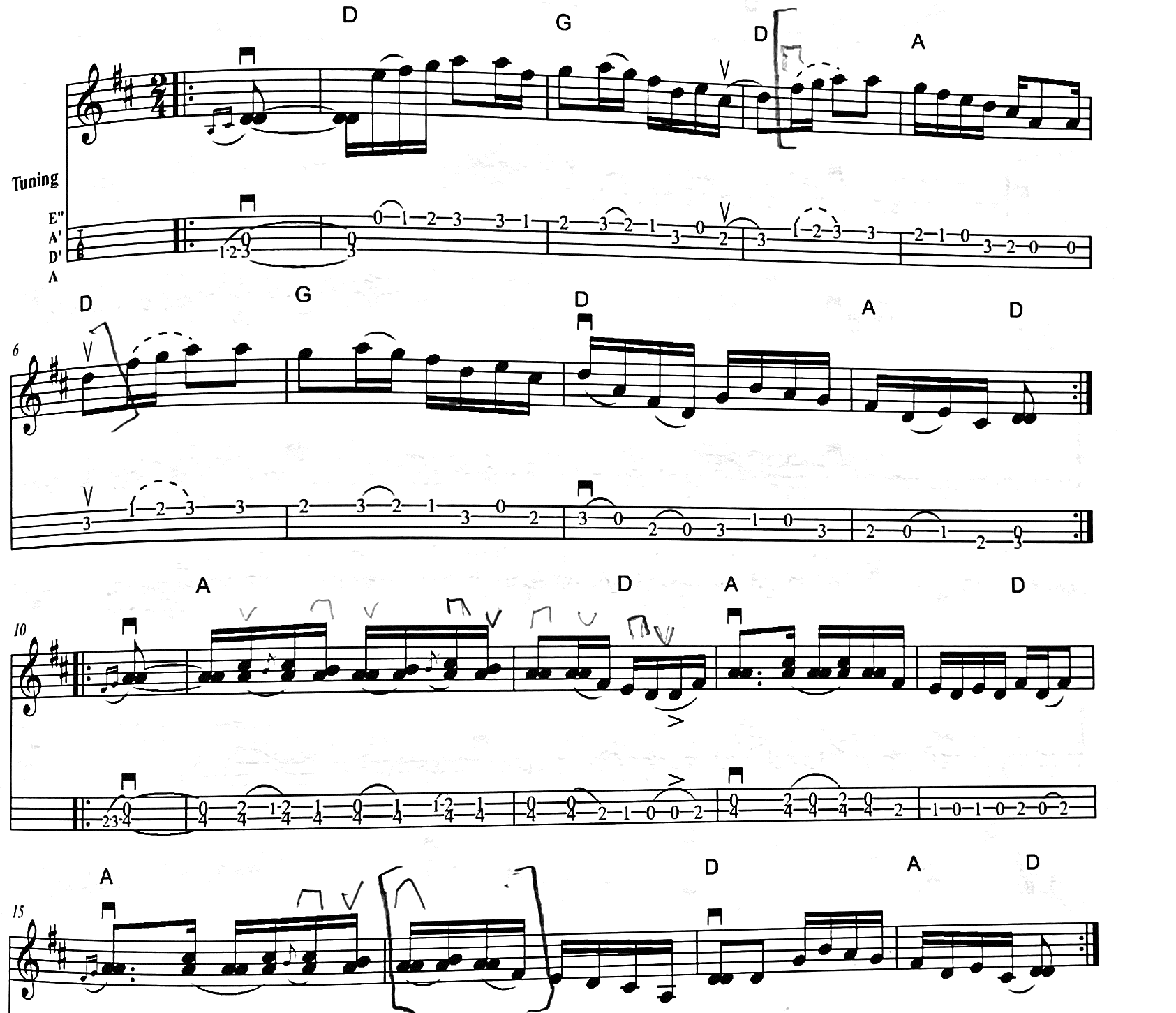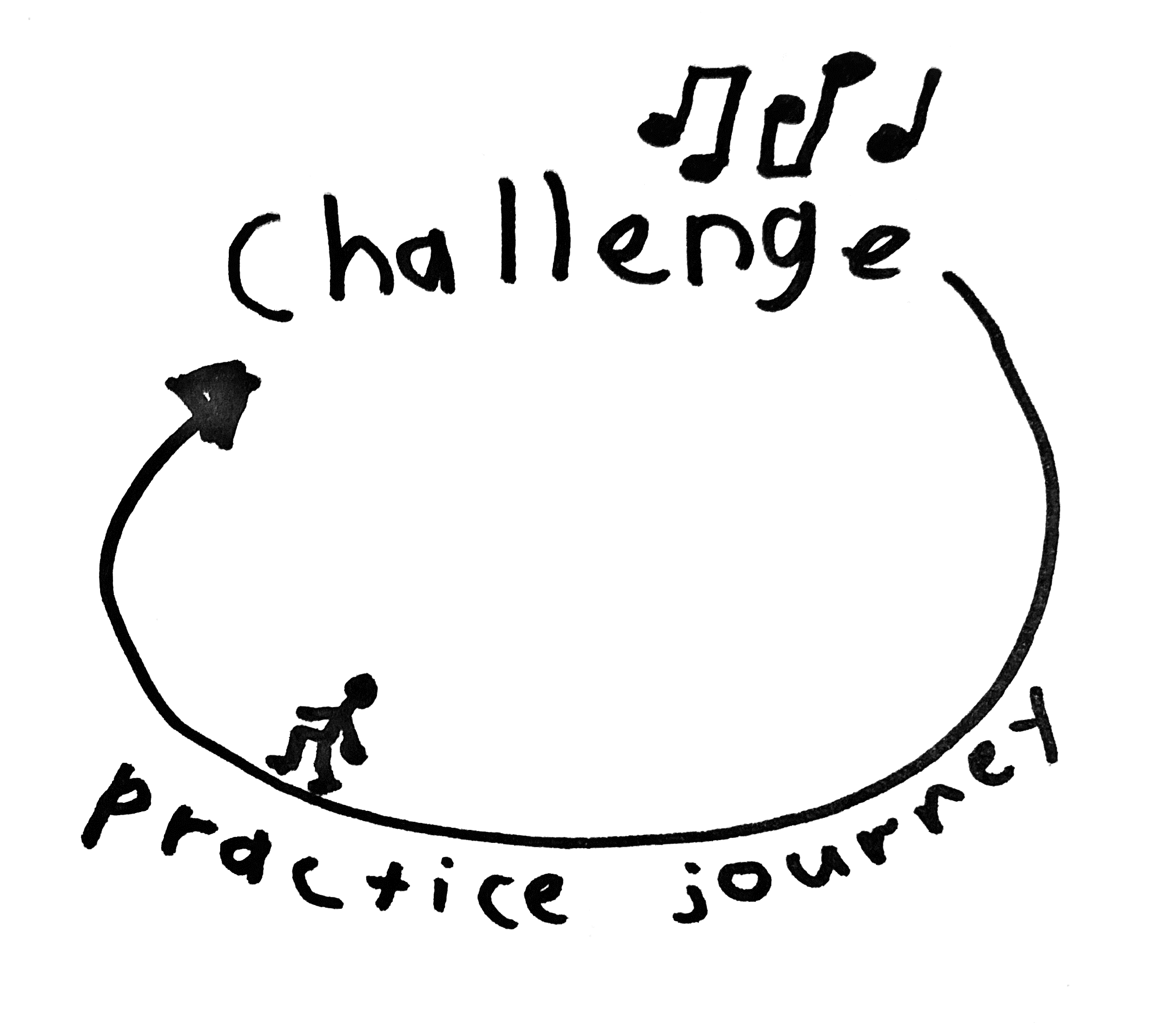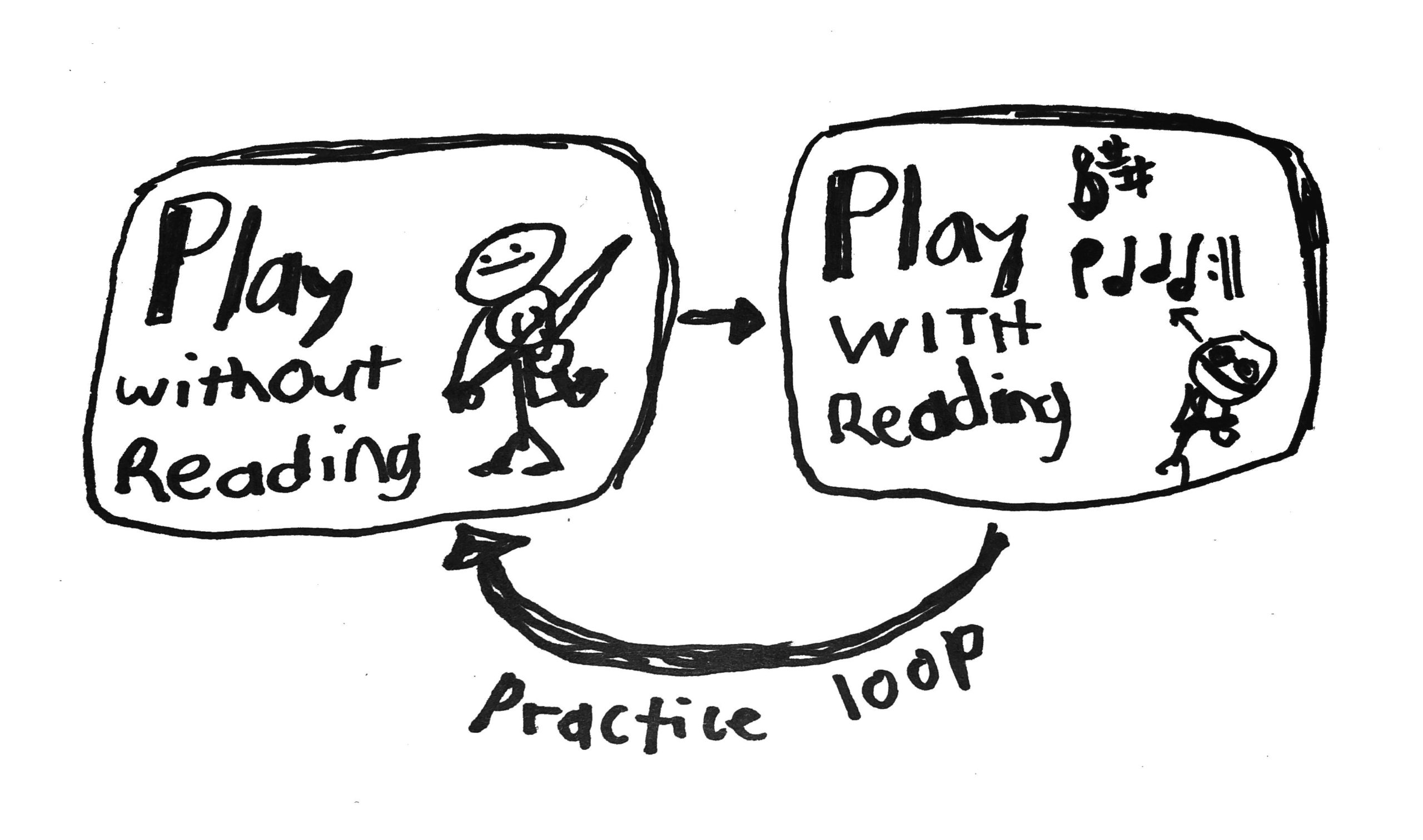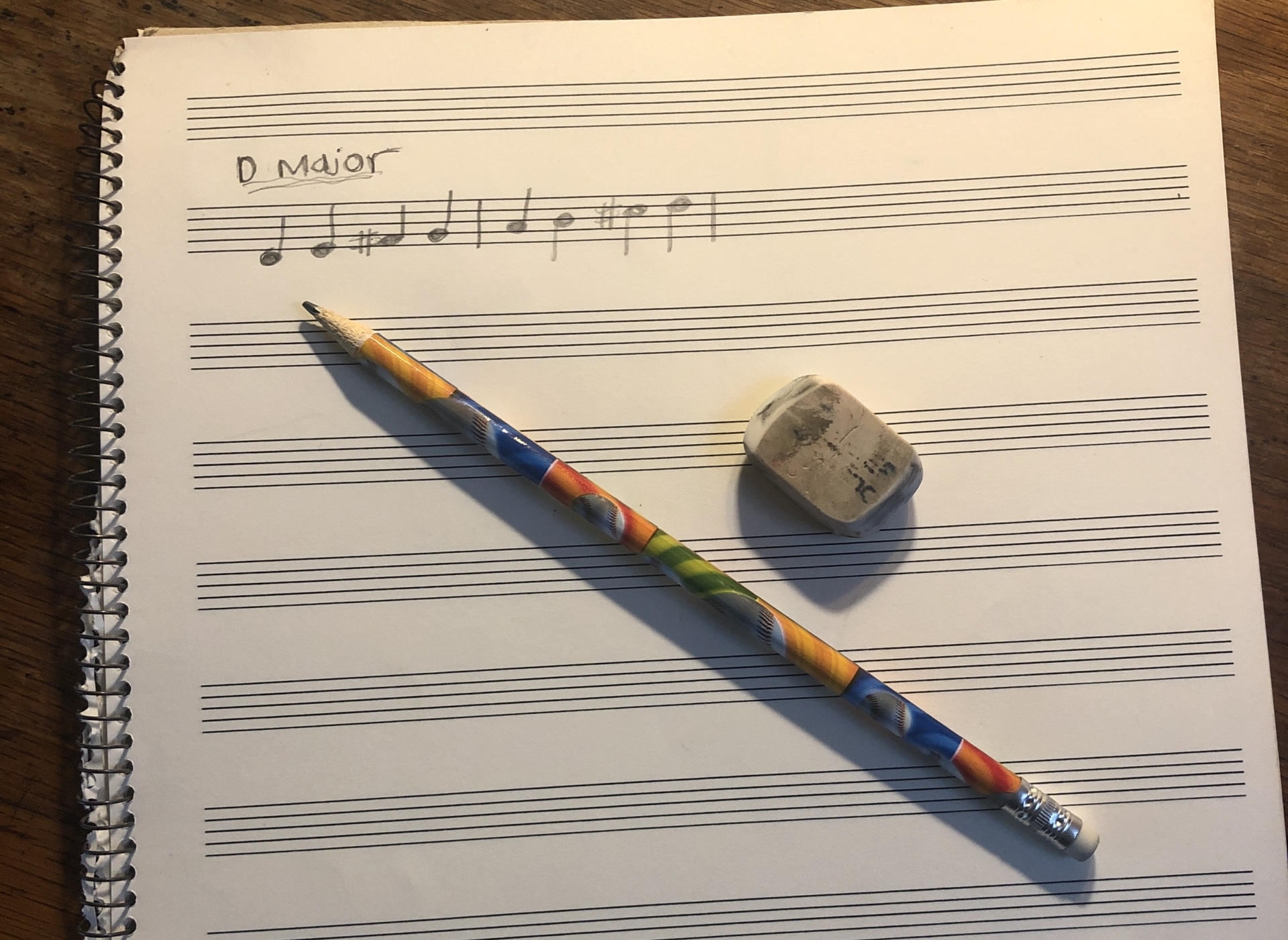7 Tips For Reading Sheet Music
I want to help you learn note-reading so you can more easily play tunes you love. In this lesson I’m going to show you 7 Tips For Reading Sheet Music
7 Note-Reading Tips
- Start by reading easy or familiar tunes
- Alternate between reading and just playing
- Use a pencil
- Interleaving
- Use audio as a note-reading aid
- Write what you read
- Avoid becoming “tethered” to sheet music
1. Start by reading easy or familiar tunes
Return to simple tunes like Twinkle Little Star. Leverage these to learn note-reading (as well as any new technique or skill).
This warms you up for more challenging reading.
2. Alternate between reading and just playing
Continuously alternate between just playing, just reading, doing both at the same time.
When you just play, you can re-focus on good sound.
The break from reading is spaced repetition which helps you learn.
3. Use a pencil
Use a pencil to mark up sheet music. This is a great way to focus your practice. Later on, you can erase markings that you no longer need to see.
Some things you can mark up on the sheet music:
- Mark difficult parts with brackets
- Take note of repeating parts
- Add fingerings
- Add slur markings
Here’s a tune called Forked Deer. I marked up bowing directions (downbow and upbow) as well as difficult parts (in brackets).

4. Interleaving
Mix note-reading in with the practice of other things. This is called Interleaving or “spaced repetition.” The gaps between practicing something help you to remember and learn it more deeply.
So practice reading a tune for 5-10 minutes, then do something else. Switch your attention to something else, like a different tune or scales. Then when you return to reading the tune, you’ll approach it with fresh energy. That little gap will help you to read it again tomorrow.

5. Use audio as a note-reading aid
Learn from sheet music with audio that exactly matches. This naturally trains your brain to read notes without even knowing rules. I call this Intuitive Note-Reading.

After you’ve learned the tune, you can test your skill by reading the same sheet music without audio.
6. Write what you read
Once you get the basic idea of reading, try to write sheet music yourself.

This deepens the practice of reading. As usual, use the micro-practice process.
- Start by reading a single bar.
- Then look away from the sheet music and write it yourself.
- Use the original sheet music to check your work.
- Gradually work up to writing longer sections of sheet music.
Use a sheet music notebook or an online app like for you to print.
7. Avoid becoming “tethered” to sheet music
Sheet music is a just tool to help you play music. Once you’ve learned and memorized a tune, let go of reading, even for a short while. Otherwise, you’ll become dependent on it.
Like any tool, it can serve you. But if you’re not careful, you’ll wind up being a servant to the tool.
Don’t worry if you feel that you’re already totally dependent on sheet music. Just make it a practice to memorize tunes, one bar at a time. Eventually you’ll do this faster with less effort.
